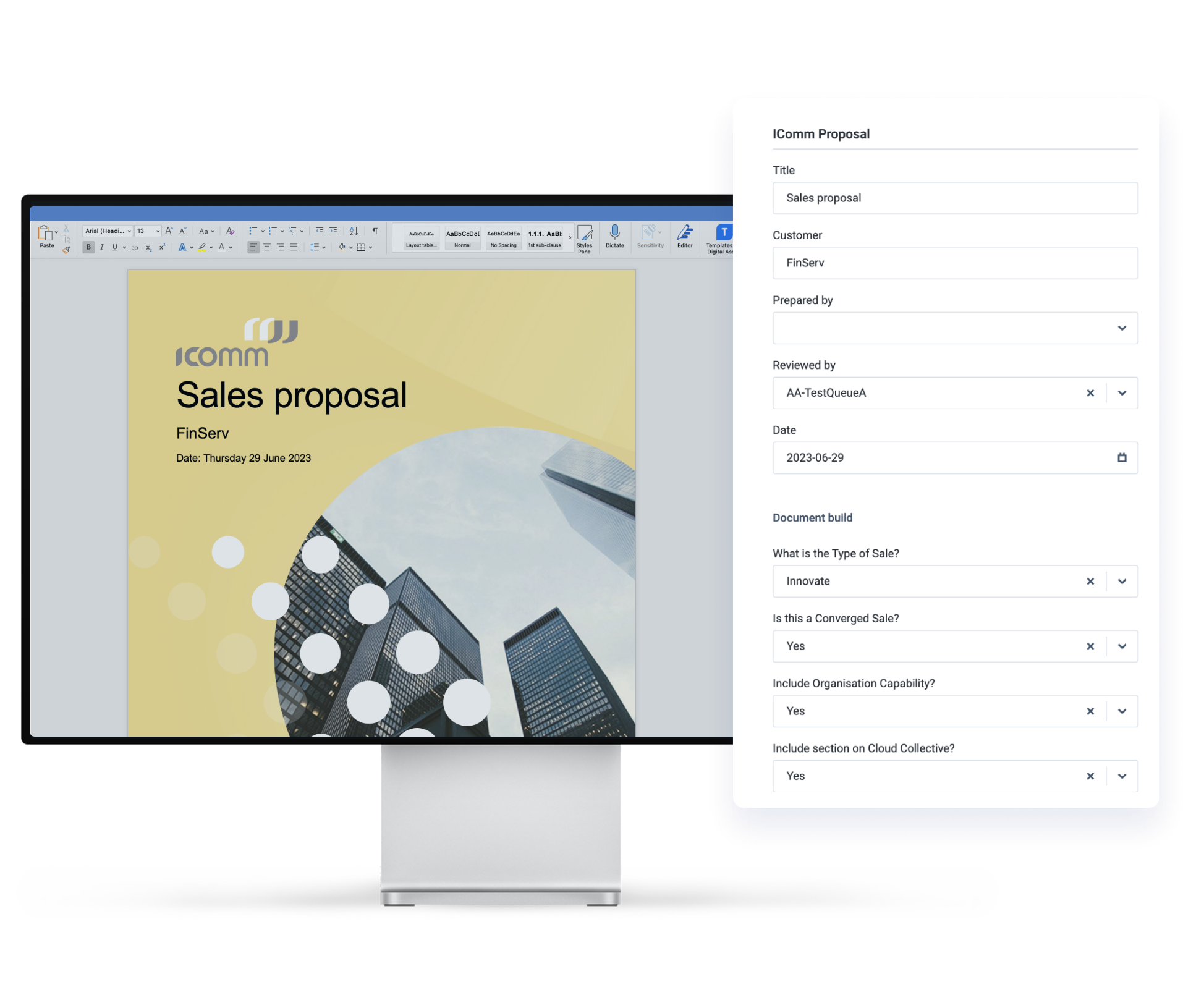CASE STUDY
How IComm increased its win rate with proposal automation
“We’re getting strong usage from the team because Templafy has helped us reduce our proposal creation from 4 hours down to 20 minutes!”.
Justin O’Meara
Unified Communications Consultant, IComm


INDUSTRY
Information Technology & Services
LOCATION
Australia
FOUNDED
2001
Improving proposal efficiency
As a top-tier consultancy, IComm’s pipeline and growth depend on custom-tailored proposals that are fine-tuned to their customers’ technical needs. These proposals took hours of manual effort to produce and were often repurposed incorrectly for subsequent proposals.
This process — which involved finding a pre-existing proposal, editing out old customer information, and adding in new material — was both labor intensive and often led to errors in content, formatting, or both.
Additionally, this method could not accommodate new products and services that IComm wanted to pitch, leaving individual team members working harder to fit new information into old proposal templates.
James Bruce, Senior Pre-sales Architect and Justin O’Meara, Unified Communications Consultant share their reflections on life before and after Templafy.
The results
- Reduction in time spent creating new proposals
- Increase in proposal win rates
- Significant productivity gains
The challenges
- The delayed time between the initial customer pitch and delivering a proposal
- Out-of-date and unprofessional templates and formats
- Limited sales capacity due to manual effort needed to produce each proposal
Why did you decide to optimize your proposal creation process?
Originally, we were working with a partner to build templates, which morphed into building a very basic pricing tool. And we looked at our internal process from first talking to a customer to getting a proposal in front of them, and we really wanted to shorten that time frame. One consideration was getting a proposal format that looked professional, and another was making sure it was flexible enough to accommodate our different types of sales and customers.
What challenges did your old process create?
On the IT front, when seeking project board approval for the technical aspects, the fact that it was already there and had been through the accreditation process meant that most of the checks that needed to be done had already been completed.
Why was Templafy the right choice?
Our process was leading to unprofessional proposals — maybe the find and replace weren’t perfect, and no one was double-checking them. In some cases, we were using an old format, and moving that information to a new template was very time-consuming. It took us three to four weeks to get a proposal in front of a customer, where it needed to be one week or three weeks at most.
How does IComm use Templafy in practice?
Before, it would take a member of our sales team an average of four hours to create a Managed Services Agreement. Now, they can just fill out a quick form and Templafy produces a document automatically, letting them just fill in any final details. All in all, the new process takes about 20 minutes.

“Templafy has freed up our sales team to do more live presentations, which has a direct impact on our win rate.”

James Bruce
Senior Pre-sales Architect
How have your team members responded since rolling out Templafy?
Now we’re doing document versioning, so our team members understand they’re getting the latest and greatest version of whatever template they’re pushing out to the customers, so our overall quality and quality control have improved significantly as well.
How has Templafy affected total sales?
Templafy has freed up our sales team to do more live presentations, which has a direct impact on our win rate. Previously our win rate was 66%, but with more in-person presentations and demonstrations, our rates are 75% or higher.
The Solution
Significantly faster proposal creation
By automating much of the proposal creation process, team members can quickly answer a few questions and let Templafy generate a new, on-brand, up-to-date document where they can apply final touches.
Higher win rates
Sales team members spend less time creating proposal documents, giving them more time to do live presentations, positively impacting the percentage of deals closed.
Widespread adoption and quality control
Easier, faster document creation created a natural incentive for employee adoption, both improving efficiency and streamlining quality control.

Faster proposal creation
Increase in proposal win rates

About IComm
IComm is a top consultancy and provider of unified communications, IT, and cloud services. They offer a range of sophisticated hardware, software, and consultancy solutions, supported by expert technicians and consultants. IComm is dedicated to future-proofing clients’ IT systems and keeping them up-to-date with rapid technological changes.
